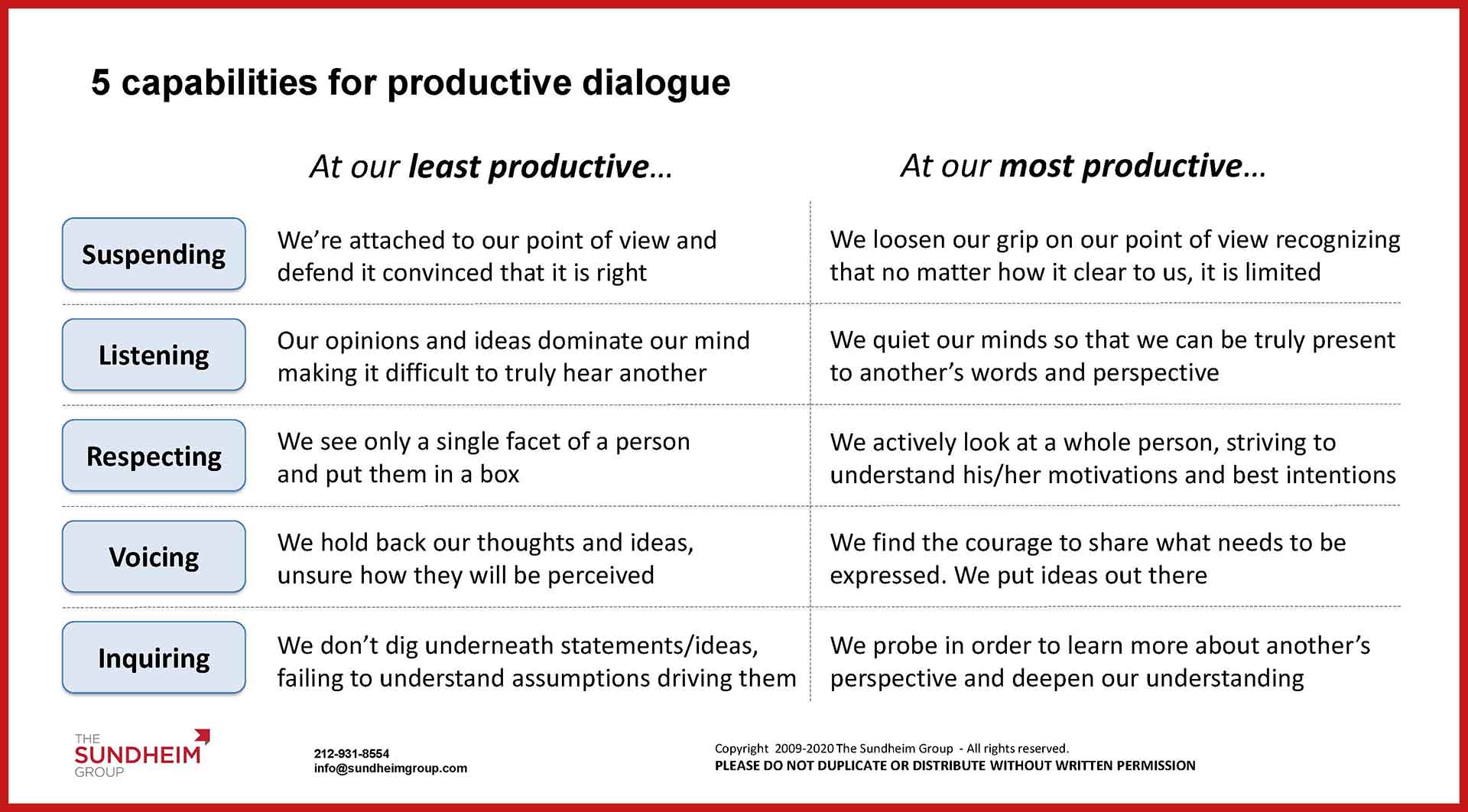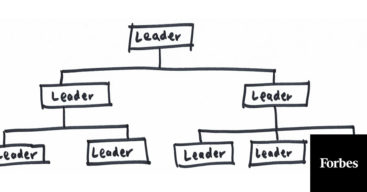Originally published June 11, 2020 on Forbes
by Doug Sundheim
Dialogue is the art of thinking and talking together at critical moments to deepen awareness and understanding. The current protests surrounding racial inequality, and global economic dynamics spotlighting income inequality and climate change make clear an inescapable fact: We need dialogue now more than ever.
However, dialogue can be difficult. It requires time, an open mind, a willingness to change, courage to speak up, and mutual respect—things that feel in short supply these days. That doesn’t mean we should shy away from dialogue. Rather we should be thoughtful in how we approach it. Following are a few suggestions.
Practice 5 key skills
At the heart of good dialogue is the ability to put your perspective aside to truly hear others. This capability is called suspending. It, along with four additional capabilities — listening, respecting, voicing, and inquiring — make up what I refer to as the five fundamental moves of dialogue. Each can be viewed on a continuum from least productive to most productive. Below is a slide capturing these continua. (If the image is hard to read, identical text is below it.) Effective dialogue is the result of a group of people moving to the more productive side of the continuum on each dimension.

Suspending
- At our least productive – We’re attached to our point of view and defend it convinced that it is right
- At our most productive – We loosen our grip on our point of view recognizing that no matter how it clear to us, it is limited
Listening
- At our least productive – Our opinions and ideas dominate our mind making it difficult to truly hear another
- At our most productive – We quiet our minds so that we can be truly present to another’s words and perspective
Respecting
- At our least productive – We see only a single facet of a person and put them in a box
- At our most productive – We actively look at a whole person, striving to understand his/her motivations and best intentions
Voicing
- At our least productive – We hold back our thoughts and ideas, unsure how they will be perceived
- At our most productive – We find the courage to share what needs to be expressed. We put ideas out there
Inquiring
- At our least productive – We don’t dig underneath statements/ideas, failing to understand assumptions driving them
- At our most productive – We probe in order to learn more about another’s perspective and deepen our understanding
Be patient in creating a safe space for dialogue
The safer the space, the better the dialogue. However, safe spaces don’t materialize through edicts. A feeling of psychological safety gets stronger or weaker through social proof. Has someone opened up a sensitive topic and gotten positive reinforcement? Are leaders role modeling behavior and making themselves vulnerable? Sometimes it takes a few meetings with productive behaviors to begin to create a sense of safety. Don’t try to force dialogue around a difficult issue if people don’t feel safe. It will usually backfire and make open dialogue tougher in the future. Use the dialogue skills above to make your conversational space safer over time.
Pick the right situations for dialogue and then actively seek it out
Dialogue takes focus and energy. While a lot of situations could benefit from it, we cannot always engage in it. It’s best used in high-stakes and complex situations involving conflicting and contentious viewpoints. On the macro scale, racial inequality is one of these topics. I recommend seeking out dialogue groups for exploration. Many community, civic, and educational institutions around the world are holding sessions. As well, this site has useful resources on framing and starting dialogues around the topic of race.
On a micro scale, complex decisions or strained relationships among key people in an organization are good reasons for dialogue. Opening a dialogue between groups or factions can loosen entrenched perspectives and create room for new paths forward. Time invested now can have a significant positive benefit later.
Consider external facilitation for your toughest issues
If you’re trying to open a dialogue or get aligned around a particularly challenging set of issues in your organization, using an experienced external facilitator can be a good idea. An objective person offers a few important benefits. First, they’re not as close to the issues making it easier for them to stay objective. Second, their presence allows all group members to be players in the dialogue and not have to worry about refereeing tough interactions that often arise. Finally, they can help ensure quieter members get their voices heard and more vocal members don’t monopolize airtime.
In theory, it’s hard to argue against robust dialogue as an important leadership skill. In practice, however, for reasons listed above, dialogue is tough to do. The best advice is to start building the skills one meeting at a time. The long-term positive impact is worth it. Leaders who role model skillful dialogue create more leaders who do the same. In the tumultuous years ahead, this skill, embedded in a culture, both organizationally and societally, is essential.
Here is a useful resource on dialogue facilitation.



